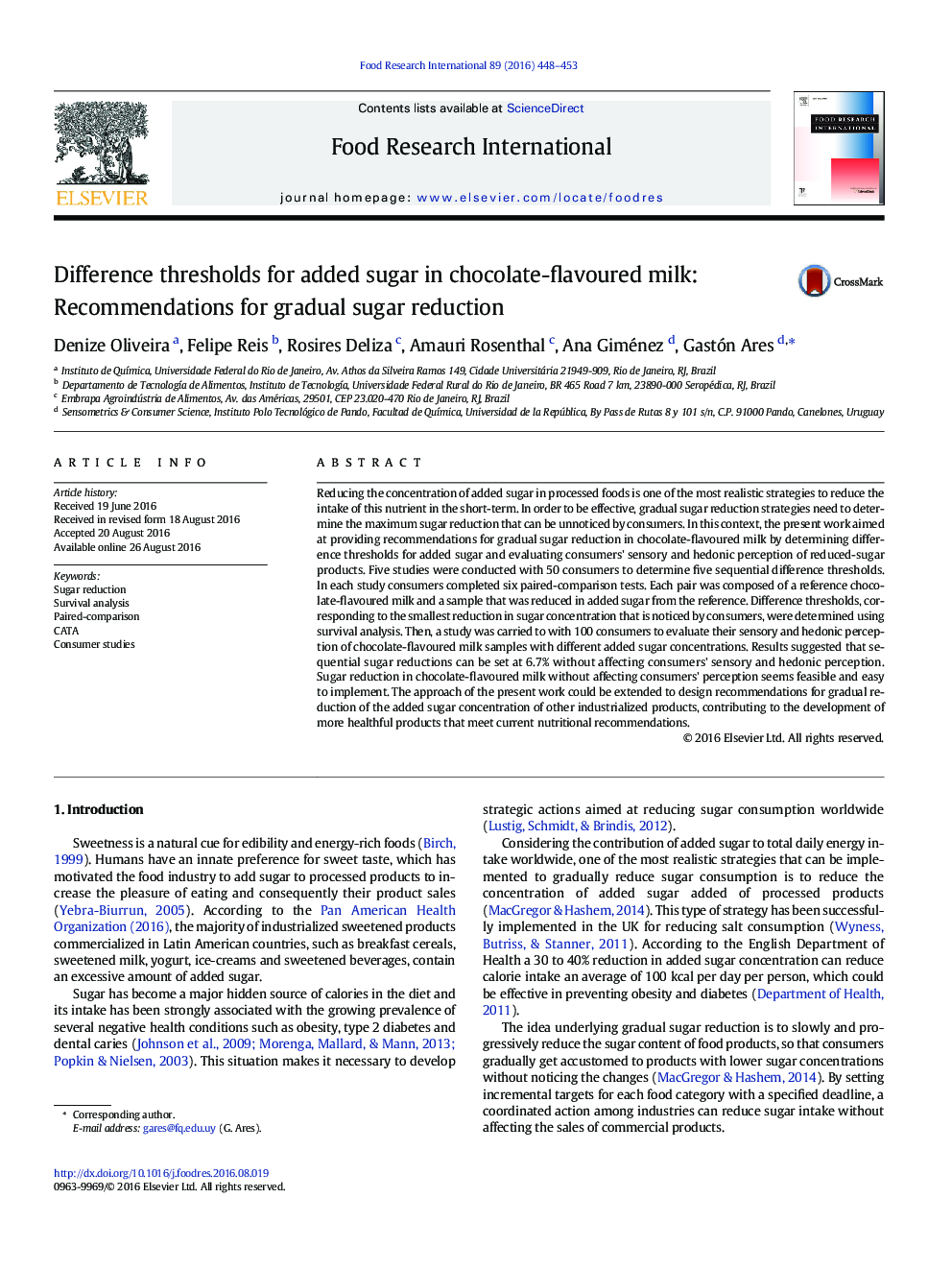| Article ID | Journal | Published Year | Pages | File Type |
|---|---|---|---|---|
| 6394814 | Food Research International | 2016 | 6 Pages |
â¢Difference thresholds for added sugar in chocolate flavoured milk were determined.â¢Difference thresholds for added sugar ranged between 8.3% and 6.4%.â¢On average, added sugar can be reduced 6.7% without affecting sensory perception.â¢Consumer liking was not significantly affected by a reduction of 29% in added sugar.â¢The approach used in the study can be extended to other products.
Reducing the concentration of added sugar in processed foods is one of the most realistic strategies to reduce the intake of this nutrient in the short-term. In order to be effective, gradual sugar reduction strategies need to determine the maximum sugar reduction that can be unnoticed by consumers. In this context, the present work aimed at providing recommendations for gradual sugar reduction in chocolate-flavoured milk by determining difference thresholds for added sugar and evaluating consumers' sensory and hedonic perception of reduced-sugar products. Five studies were conducted with 50 consumers to determine five sequential difference thresholds. In each study consumers completed six paired-comparison tests. Each pair was composed of a reference chocolate-flavoured milk and a sample that was reduced in added sugar from the reference. Difference thresholds, corresponding to the smallest reduction in sugar concentration that is noticed by consumers, were determined using survival analysis. Then, a study was carried to with 100 consumers to evaluate their sensory and hedonic perception of chocolate-flavoured milk samples with different added sugar concentrations. Results suggested that sequential sugar reductions can be set at 6.7% without affecting consumers' sensory and hedonic perception. Sugar reduction in chocolate-flavoured milk without affecting consumers' perception seems feasible and easy to implement. The approach of the present work could be extended to design recommendations for gradual reduction of the added sugar concentration of other industrialized products, contributing to the development of more healthful products that meet current nutritional recommendations.
